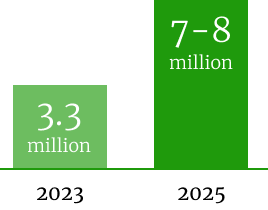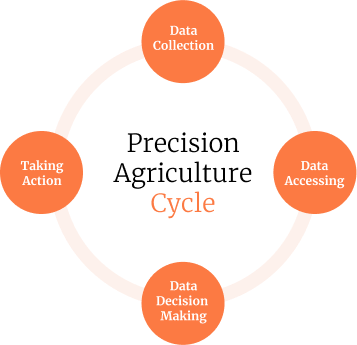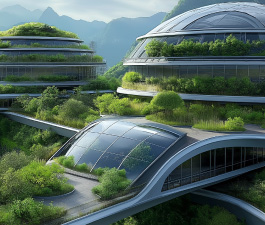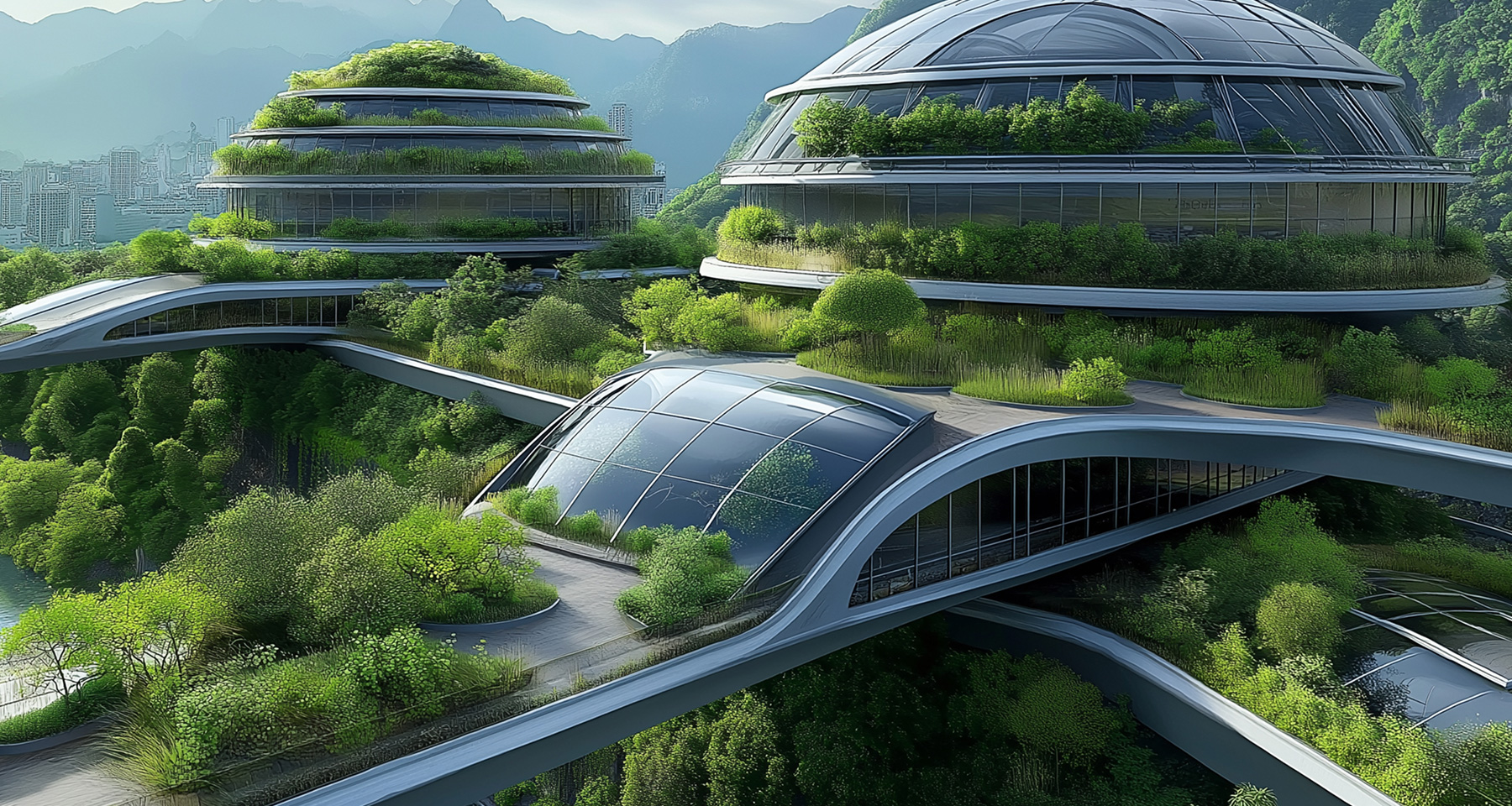
Emerging Sustainable Technologies that Will Transform Our Daily Lives
Technological development did not profoundly affect the environment until the 18th and 19th centuries, during the Industrial Revolution.
January 2025
Emerging Sustainable Technologies that Will Transform Our Daily Lives
Humankind’s earliest technology was stone tools, developed about 3.3 million years ago. However, technological development did not profoundly affect the environment until the 18th and 19th centuries, during the Industrial Revolution.
The Industrial Revolution marked the beginning of large-scale industrialization, where they introduced new machinery, manufacturing processes, and widespread use of fossil fuels. This period set the stage for many environmental issues we face today. Fossil fuel dependency has led to global warming, climate change, air pollution, and habitat destruction due to coal mining, oil drilling, and natural gas extraction.
However, people have become increasingly aware of environmental issues in recent years, and many are shifting to sustainable lifestyles. They are embracing sustainable technologies that will reduce carbon footprints and improve quality of life. These technologies will transform how we live, work, and interact with the environment. Here are examples of such technologies.
Renewable Energy Innovations
Effective renewable energy innovations are critical if we want to overcome climate challenges. Solar, wind, and hydropower have become increasingly efficient and accessible in the last decade. But now, new technologies are emerging that are pushing the boundaries even further. Perovskite solar cells can convert more sunlight into electricity compared to traditional silicon-based cells, yet they are cheaper to produce. Transparent solar panels on their side can be integrated into windows and other surfaces for buildings to generate their own energy without compromising aesthetics.
In addition, governments worldwide are expected to invest in offshore wind farms to meet the high demand for renewable energy. Floating wind turbines installed in deeper waters where winds are stronger and more consistent will increase energy output. The National Renewable Energy Laboratory estimates that the technical potential for U.S. offshore wind is about 4,200 gigawatts of capacity or 13,500 terawatt-hours of energy per year. This is roughly thrice the electricity consumption in the U.S. annually.
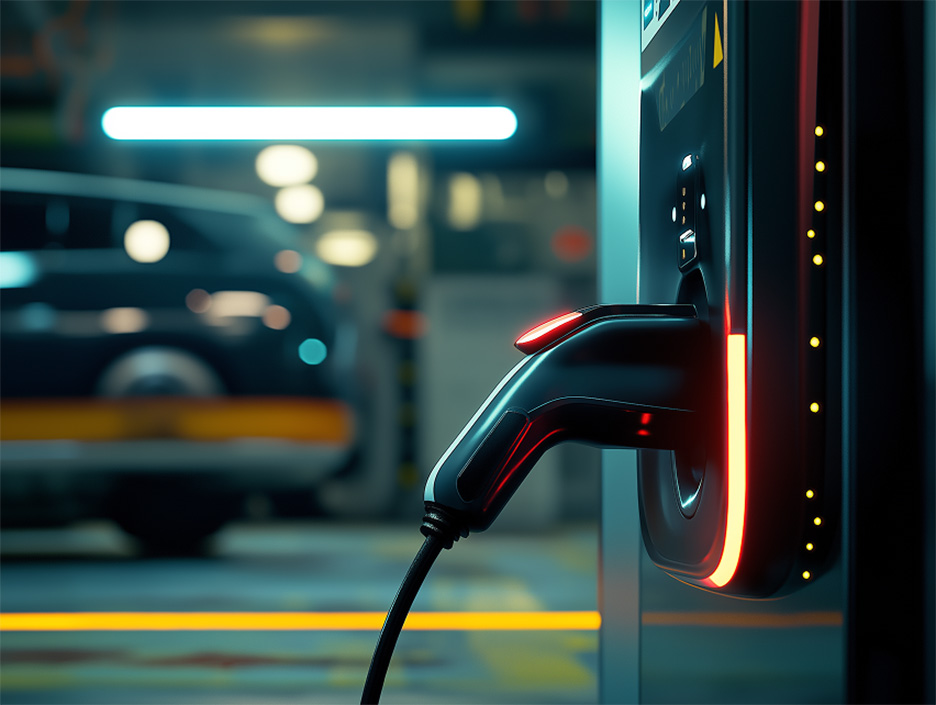
Sustainable Transportation
The transportation sector is one of the most significant contributors to global carbon emissions. It contributes between 12 and 70% of urban air pollution. The World Bank says 184,000 people died in 2010 due to air pollution from global vehicular emissions.
Electric vehicles (EVs) and hydrogen-powered vehicles have already started replacing gasoline cars. By the end of 2025, it’s expected that the number of electric vehicles (EVs) on U.S. roads will grow significantly from 3.3 million at the end of 2023. The exact figure can vary based on several factors like government incentives, consumer adoption rates, and improvements in charging infrastructure. However, industry analysts and reports suggest that the number of EVs on the road could be between 7 to 8 million by the end of 2025. Automakers are now developing EVs with longer ranges, faster charging times, and lower costs. Adopting solid-state batteries, which are smaller, safer, and have a higher energy density, will make EVs even more efficient.
Additionally, hyperloop and high-speed rail are eco-friendly alternatives to air and road transport. A hyperloop is a proposed high-speed transportation system that moves passenger or cargo pods through low-pressure tubes at extremely high speeds, potentially over 600 mph (965 km/h). Although hyperloops do not yet exist as fully operational public transportation systems in 2024, there is ongoing development, testing, and interest from various companies.

Sustainable Agriculture
The demand for food is growing as the population increases. Unfortunately, traditional farming practices are resource-intensive and contribute to deforestation, water scarcity, and soil degradation. Farmers are now embracing sustainable technologies like vertical farming and precision agriculture.
Precision agriculture uses data, GPS, and IoT sensors to monitor crops and accurately apply resources like water, fertilizers, and pesticides. Vertical farming will increase food supplies without using more land. These farms produce fresh vegetables year-round.
Moreover, lab-grown meat has made significant progress. This is meat developed from animal cell culture in a lab but does not involve raising or slaughtering animals. The U.S. and Singapore have already approved several companies to produce and sell lab-grown meat. Although the meat is not widely available, we expect the price to drop slightly as more companies are authorized.
Smart Cities and Infrastructure
Smart grids, sustainable building materials, and autonomous public transportation remain priorities for cities that want sustainable infrastructure. As mentioned above, many countries are adopting renewables like solar and wind. Sustainable building standards like LEED (Leadership in Energy and Environmental Design) are pushing for more widespread adoption of eco-friendly materials in construction projects worldwide.
Many green building projects use carbon-capturing concrete and bamboo composites. Additionally, we can expect to see fully autonomous public transportation. Several cities like San Francisco are piloting self-driving buses and shuttles.
Circular Economy Technologies
The circular economy concept is gaining traction as businesses and governments seek to move away from the traditional “take, make, dispose” model. In a circular economy, products and materials are used for as long as possible, and waste is minimized through reuse, recycling, and recovery.
Innovations in recycling technologies—like chemical recycling—allow materials like plastics to be broken down and reformed into new products without degrading their quality. This helps reduce the amount of waste that ends up in landfills. Waste-to-energy technologies convert non-recyclable waste into usable energy to reduce the environmental burden of waste while generating power.
Final Thought
As the world grapples with the effects of climate change, we need to make significant changes in our lifestyles to address the environmental challenges we face. These sustainable technologies will transform our daily lives for the better.
